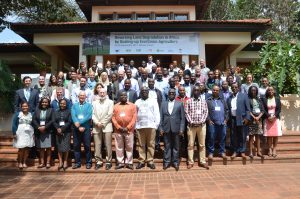 A visit to Embu County, Kenya, two years ago has birthed a very promising project to address the challenges emanating from land degradation. While visiting Purity Gachanga, an agroforestry champion, Dr. Roberto Ridolfi, Director for Sustainable Growth and Development at the Directorate General for Development and Cooperation, was impressed by the transformation that trees could bring to African farmers. Keen to see these benefits spread across the continent, and enjoyed by many millions of farmers, Dr. Ridolfi initiated the project dubbed ‘Reversing Land Degradation in Africa by Scaling-up EverGreen Agriculture’.
A visit to Embu County, Kenya, two years ago has birthed a very promising project to address the challenges emanating from land degradation. While visiting Purity Gachanga, an agroforestry champion, Dr. Roberto Ridolfi, Director for Sustainable Growth and Development at the Directorate General for Development and Cooperation, was impressed by the transformation that trees could bring to African farmers. Keen to see these benefits spread across the continent, and enjoyed by many millions of farmers, Dr. Ridolfi initiated the project dubbed ‘Reversing Land Degradation in Africa by Scaling-up EverGreen Agriculture’.
EverGreen Agriculture, which is a form of agroforestry, is an affordable solution that integrates trees with food crops and livestock to create more sustainable and productive agricultural systems for smallholder farming families. While positively transforming the lives of farmers in more than twenty African countries, trees on farms restore exhausted soils with richer sources of organic nutrients. This translates to increased crop yields, more fodder for livestock, and greater firewood supplies for household consumption, and increased income.
More than 80 experienced development professionals and scientists convened at the project’s inception workshop held at the World Agroforestry Centre (ICRAF) from 26-30 September, to map out the best approaches to scale-up these practices to reverse land degradation in eight countries in the Sahel and East Africa. Dennis Garrity, Drylands Ambassador to the UN Convention to Combat Desertification and Chair of the EverGreen Agriculture Partnership said in his opening remarks that “Scaling up EverGreen Agriculture to 500,000 farmers across Africa will not be easy. In fact, it will be hard. But, we relish the fact that we have the partnership and the resources and skills to do it. And we are building on the successful efforts that are already underway in all of these eight countries.”
 Through working groups and learning exchange bazaars over the span of four days, participants discussed the development of appropriate interventions and scaling-up methodologies, based on the successful experiences and evidence shared by the various implementing partners, including World Vision, CRS, OxFam and CARE. These will guide the project during its five-year lifespan. “Implementation of Farmer Managed Natural Regeneration is important because without implementation we have no evidence, and without evidence, we have nothing to communicate. We therefore need to have a good mix of the these for us to spread the practices of EverGreen Agriculture,” noted Lawrence Kiguro, Associate Director, Livelihoods and Resiliency – World Vision, Kenya
Through working groups and learning exchange bazaars over the span of four days, participants discussed the development of appropriate interventions and scaling-up methodologies, based on the successful experiences and evidence shared by the various implementing partners, including World Vision, CRS, OxFam and CARE. These will guide the project during its five-year lifespan. “Implementation of Farmer Managed Natural Regeneration is important because without implementation we have no evidence, and without evidence, we have nothing to communicate. We therefore need to have a good mix of the these for us to spread the practices of EverGreen Agriculture,” noted Lawrence Kiguro, Associate Director, Livelihoods and Resiliency – World Vision, Kenya
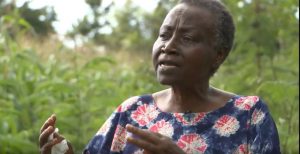


 Improved soil fertility, suppression of striga weeds, increased crop yields, nutritious fodder for livestock, and more firewood, are just some of the benefits farmers derive from intercropping fertiliser shrubs and crops on farms.
Improved soil fertility, suppression of striga weeds, increased crop yields, nutritious fodder for livestock, and more firewood, are just some of the benefits farmers derive from intercropping fertiliser shrubs and crops on farms. A visit to Embu County, Kenya, two years ago has birthed a very promising project to address the challenges emanating from land degradation. While visiting Purity Gachanga, an agroforestry champion, Dr. Roberto Ridolfi, Director for Sustainable Growth and Development at the Directorate General for Development and Cooperation, was impressed by the transformation that trees could bring to African farmers. Keen to see these benefits spread across the continent, and enjoyed by many millions of farmers, Dr. Ridolfi initiated the project dubbed ‘Reversing Land Degradation in Africa by Scaling-up EverGreen Agriculture’.
A visit to Embu County, Kenya, two years ago has birthed a very promising project to address the challenges emanating from land degradation. While visiting Purity Gachanga, an agroforestry champion, Dr. Roberto Ridolfi, Director for Sustainable Growth and Development at the Directorate General for Development and Cooperation, was impressed by the transformation that trees could bring to African farmers. Keen to see these benefits spread across the continent, and enjoyed by many millions of farmers, Dr. Ridolfi initiated the project dubbed ‘Reversing Land Degradation in Africa by Scaling-up EverGreen Agriculture’. Through working groups and learning exchange bazaars over the span of four days, participants discussed the development of appropriate interventions and scaling-up methodologies, based on the successful experiences and evidence shared by the various implementing partners, including World Vision, CRS, OxFam and CARE. These will guide the project during its five-year lifespan. “Implementation of Farmer Managed Natural Regeneration is important because without implementation we have no evidence, and without evidence, we have nothing to communicate. We therefore need to have a good mix of the these for us to spread the practices of EverGreen Agriculture,” noted Lawrence Kiguro, Associate Director, Livelihoods and Resiliency – World Vision, Kenya
Through working groups and learning exchange bazaars over the span of four days, participants discussed the development of appropriate interventions and scaling-up methodologies, based on the successful experiences and evidence shared by the various implementing partners, including World Vision, CRS, OxFam and CARE. These will guide the project during its five-year lifespan. “Implementation of Farmer Managed Natural Regeneration is important because without implementation we have no evidence, and without evidence, we have nothing to communicate. We therefore need to have a good mix of the these for us to spread the practices of EverGreen Agriculture,” noted Lawrence Kiguro, Associate Director, Livelihoods and Resiliency – World Vision, Kenya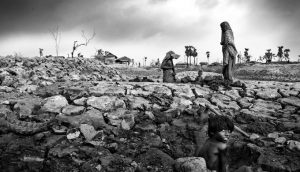 A new study looks at five major impacts of climate change, the sectors and the people most vulnerable.
A new study looks at five major impacts of climate change, the sectors and the people most vulnerable.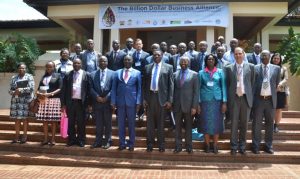 Water scarcity is a critical constraint to Kenya’s socioeconomic development and its achievement of vision 2030.On 11 April 2017, the Government and partners from the development and business communities launched the Kenya chapter of the Billion Dollar Alliance for Rainwater Harvesting, a continent-wide, multi-actor alliance designed to scale up farm pond technology for agribusiness and livelihood resilience for dry land farming systems.Kenya’s rainwater potential is more than 350 billion cubic meters. If captured and managed, this water is enough to support a population of 233 million people.This partnership is led by World Forestry Center and World Food Program.The main goal of this partnership is to increase farmers’ income and to improve food security. The partnership will provide technical, financial, policy and research support to the smallholder farmers.Impediments such as slow implementation and low technology adoption may hamper the realization of this process.However, the minister for water and irrigation reaffirmed the stakeholders of the government’s support in creating an enabling environment through proper policy implementation aimed at streamlining the government’s Water Sector and increase access to clean water for all in adequate quantity and quality at an affordable price as envisaged in Vision 2030 and the Constitution of Kenya.
Water scarcity is a critical constraint to Kenya’s socioeconomic development and its achievement of vision 2030.On 11 April 2017, the Government and partners from the development and business communities launched the Kenya chapter of the Billion Dollar Alliance for Rainwater Harvesting, a continent-wide, multi-actor alliance designed to scale up farm pond technology for agribusiness and livelihood resilience for dry land farming systems.Kenya’s rainwater potential is more than 350 billion cubic meters. If captured and managed, this water is enough to support a population of 233 million people.This partnership is led by World Forestry Center and World Food Program.The main goal of this partnership is to increase farmers’ income and to improve food security. The partnership will provide technical, financial, policy and research support to the smallholder farmers.Impediments such as slow implementation and low technology adoption may hamper the realization of this process.However, the minister for water and irrigation reaffirmed the stakeholders of the government’s support in creating an enabling environment through proper policy implementation aimed at streamlining the government’s Water Sector and increase access to clean water for all in adequate quantity and quality at an affordable price as envisaged in Vision 2030 and the Constitution of Kenya.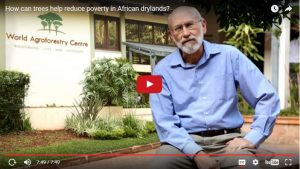 Dr. Dennis Garrity talks about the collaboration between World Agroforestry Center, Kenya Forestry Research Institute and Better Globe Forestry Ltd to reduce poverty in Kenya by helping farmers earn an income through dryland tree planting.
Dr. Dennis Garrity talks about the collaboration between World Agroforestry Center, Kenya Forestry Research Institute and Better Globe Forestry Ltd to reduce poverty in Kenya by helping farmers earn an income through dryland tree planting.